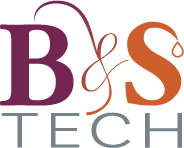Although non-alcoholic beverages still represent only a small part of all the drinks available on supermarket shelves, their success is no longer a secret. Boosted by the pandemic, how will these new alternatives evolve in the years to come?
Many alcohol drinkers have cut back on their consumption during the containment period and turned to non-alcoholic or low-alcohol alternatives. For example, Kim Cox, senior vice president of account development at NielsenIQ, found that demand for non-alcoholic and low-alcohol beverages has exploded in the past year. In the US, this year's off-premise sales reached $3.1 billion in the low and non-alcoholic wine, beer and spirits categories, an increase of more than 1000% over the previous year.
"Non-alcoholic beverages used to be reserved for situations where one could not drink - designated drivers, pregnancy, recovering alcoholics, etc. Today's consumer maintains that they can drink alcohol, but they just don't want to," comments Dave Deuser, CEO of sales and marketing at Radeberger Gruppe USA.
In light of this promising trend, Insider's analysis remains very enthusiastic: "Non-alcoholic spirits will continue to grow in 2022.”
As consumers drink less and less alcohol, it seems natural that the popularity of low or fully de-alcoholised drinks will increase. Among these new consumers, Millennials and Gen Z - who drink less than Boomers and Gen X at their age - are leading this sobriety movement.
"I think this trend has a future, as we've seen both consumer demand and a desire for brands to meet that demand with new and exciting non-alcoholic formats," concludes Mary Guiver, global category manager for beer and spirits at Whole Foods.
So there's still plenty of time for alcohol-free!
